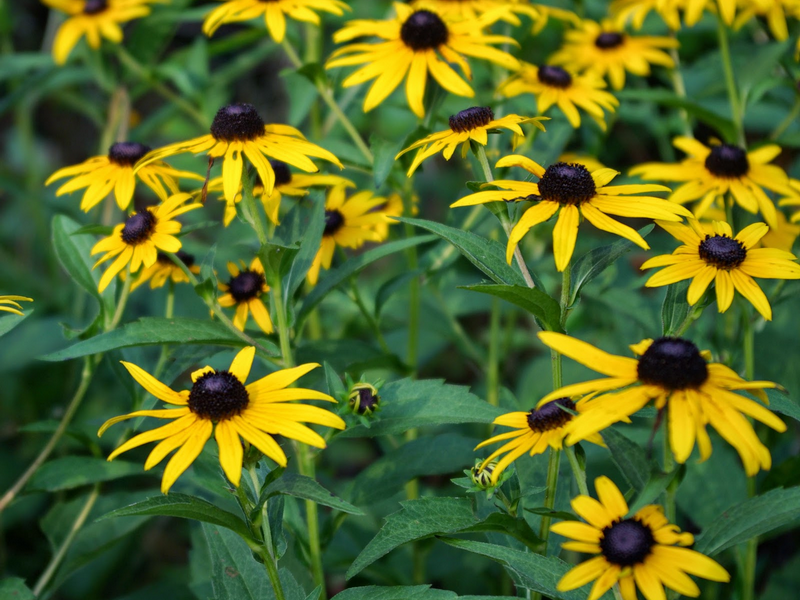Black-Eyed Susan
Rudbeckia fulgida
Click here to download a PDF of this plant information page (for printing).

Sun Exposure: Full Sun, Part Sun
Season of Interest: Summer, Fall
Bloom Time: June - September
Bloom Color: Yellow with a Dark Center
Height: 24 to 32 in.
Spread: 12 to 18 in.
Spacing: 20 in.
Water Needs: Average
Maintenance: Very little
Soil Type: Clay, Loam, Sandy, Rocky
Soil pH: Acidic, Neutral, Alkaline
Soil Drainage: Well drained
Pests: None
Diseases: None
Wildlife: Bees, Butterflies, Birds

Description:
Black-Eyed Susan provides fantastic warm colors in the late summer and fall garden. Rudbeckia fulgida are herbaceous perennials boasting golden yellow flowers with prominent, black central cones. Blooming profusely from mid-summer through early fall, they are borne on top of sturdy stems and literally cover the foliage of lance-shaped, deep green leaves. Their color range is fairly limited - from yellow to orange-yellow - but there is a lot of variation in height and habit. Extremely easy to grow, this plant looks stunning next to the bright pink or cool blue flowers of plants.ces.ncsu.edu/plants/rudbeckia-fulgida
Care and Growing Tips:
Planting black-eyed susan from rooted plants in pots is the most reliable method. Choose a sunny to partial shade location somewhere where the soil is normally moist but never waterlogged. If the soil is not well draining add lots of well rotted compost to the area and dig it in well. This plant can be planted all year long if the soil is not frozen and you can water well when conditions are dry. Mid March to October are the best times to plant most Rudbeckias.
Dig a hole twice the width of the rootball. Sprinkle in a handful of slow release fertilizer and work it into the ground. Place the plant into the hole, filling in with soil so that it is at the same depth as was in the pot. Fill around the rootball and firm the soil down gently but firmly. Water well to settle the surrounding ground around the rootball. If planting more than one plant space them al lest 18 in. apart.